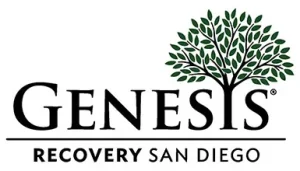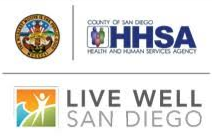Like a pebble dropped in water, addiction has a ripple effect. The actions of an alcoholic or addict eventually impact the lives of family, friends, law enforcement, medical professionals, and strangers. Within this list of people, the most endangered are the babies of addicted mothers. When women use drugs during pregnancy the child can become addicted before it is even born.
The term given to newborn babies suffering from drug withdrawal is neonatal abstinence syndrome (NAS). This occurs when a baby is separated from drugs in its mother’s system upon birth. It is most commonly recognized as the result of maternal opioid abuse. The number of reported cases has risen dramatically in the last decade or so and is being attributed to the worsening opioid epidemic.
According to a study done by Reuters, in the 10-year span from 2003 to 2013, the number of drug-dependent babies born in the country increased from about 5,000 to 27,000. NAS was first written about in medical publications in the 1970s but the sharp increase in the number of cases in the last decade or so has drawn much more attention from the medical community and the government.
There are several short term symptoms of NAS. Babies are often born underweight. They can be irritable and hyperactive and have problems sleeping. They have tremors or even seizures. These babies are scared easily and are sensitive to light and sound. Small noises or movements may cause them to cry desperately. Feeding can be difficult. Like adults experiencing opioid withdrawal, babies may have diarrhea, vomiting, and sneezing, and yawning fits. Small incremental doses of morphine or methadone are often used to help infants through NAS. Long term effects may show up in the children as they grow, in the form of behavior problems or cognitive impairments.
The Reuters article took an interesting angle on the problem. It examined 110 cases of babies with NAS who were inadvertently killed by a guardian while that person was high after the baby went home with the mother from the hospital. This usually occurred within weeks after birth. In 75% of those cases it was the mother, in the others it was a husband, boyfriend, or relative. The accidental deaths were most often caused by the mother passing out and smothering the child or giving it prescription opioid pills. This usually happened as a result of the baby accidentally being given the wrong medication. Many of these deaths resulted in incarceration for the mothers. These cases of preventable infant deaths were used to illustrate failings in the way that both these addicted mothers and newborns are treated and cared for by medical professionals and the government.
In 2003 Congress passed an amendment of the Child Abuse Prevention and Treatment Act called the Keeping Children and Families Safe Act. There are different provisions in the bill and you can read it online but essentially it was meant to provide better protection for these babies after they are born and leave the hospital. The hospitals are required to contact Child Protective Services (CPS) in the instances of NAS infant births to help ensure adequate follow up and care.
There are disconnects in the chain from the government mandate to the mothers and children themselves. Although the bill is federal law most states do not comply with it. Reuters conducted a study that found, as of 2015, only nine states had statutes in accordance with the law. Some states have laws in place that make reports mandatory only when the mother is on illegal drugs like heroin but not if she is taking prescribed opioids, which of course, can also be abused. There are instances too where addicts are still using heroin while undergoing methadone treatment.
NAS symptoms may not show up for two or three days after the baby has been taken home. Hospitals don’t always report NAS diagnoses to CPS. When they do, sometimes CPS doesn’t follow up. From what I found out, there doesn’t seem to be much of a standardized process. Drug addicted mothers may also be unwilling to seek help during pregnancy due to fears of societal judgment, arrest, or having their babies taken away. It is difficult for a mother to know what the reality of her situation is when there are discrepancies between state and federal laws. If CPS does follow up and finds that a mother is unable to provide adequate care then most likely custody will either go to relatives or the foster care system. Those two options are probably safer for the child than being in the home of a mother in active addiction. However, the relatives may not be well equipped to rear an infant and there is no guarantee of quality care with foster homes. Addicted parents already put a huge burden on the foster system. An article in The Atlantic states that: “Nationally, about a third of children entering foster care do so due to parental drug abuse, according to 2016 data.”
To someone unfamiliar with addiction it may be easy to place all the blame on the mothers, to say that they should know better, to ask how they could put their own child through something like that. In another article about a mother struggling with addiction, she is quoted as saying, “An addiction is stronger than a mother’s love for her children.” I have heard the same sentiment many times from parents who share their stories in AA and NA meetings. That is a testament to the power of addiction. It isn’t the case that they do not love their children. It isn’t the case that they don’t care. People in the midst of addiction will do things that they would never do sober. Alcohol and drugs take over everything.
If we look at this problem in black and white then ultimately the fate of these infants falls to their mothers. I don’t see it as that simple. Addiction is recognized as a disease. It needs to be looked at in the same way as other chronic, deadly diseases. Rather than being judged on their character and decisions, addicted mothers should be given ample opportunity for recovery so they can raise their children. Some will not be ready for recovery going into pregnancy but understanding what options are available, having a chance to get help before a child has to be taken away, that could be a deciding factor for many women to seek out that help. Federal and state governments need to come to a universal agreement on what the laws are. There needs to be more accountability from hospitals and CPS, a better information sharing process.
I was happy to come across an article that highlighted a newer program at a University of Kentucky health clinic, called PATHways. It works with women during pregnancy and ideally, for two years after. Mothers are given addiction treatment along with support groups and parenting classes. They are given opportunities to spend time and bond with their babies even if they don’t have custody. Typically when babies with NAS are born, they are taken away from the mother and kept in a special hospital unit for monitoring but the environment of bright lights and noise can make it worse for them. They are sensitive to those stimuli during withdrawal. PATHways keeps the babies with their mothers as much as possible with frequent hospital staff visits. So far the program has had promising results.
Hopefully, the private and public sectors can work together in creating better solutions. It may not be the responsibility of the government to see that the newborn children of addicts are properly cared for. The way things are now though, it ends up bearing most of the burden anyway. When children are taken away, they end up wards of the state. Parents who accidentally kill their infants end up in prison. These are both avoidable situations. Pregnancy in addiction is a growing problem and it needs to be seen for what it is and not how we think it should be. Politics shouldn’t play a part in the issue. It is something that, directly or indirectly, affects everyone. We need to look at the reality of the situation and deal with it in a way that leads to the best possible outcome for mother and child.

